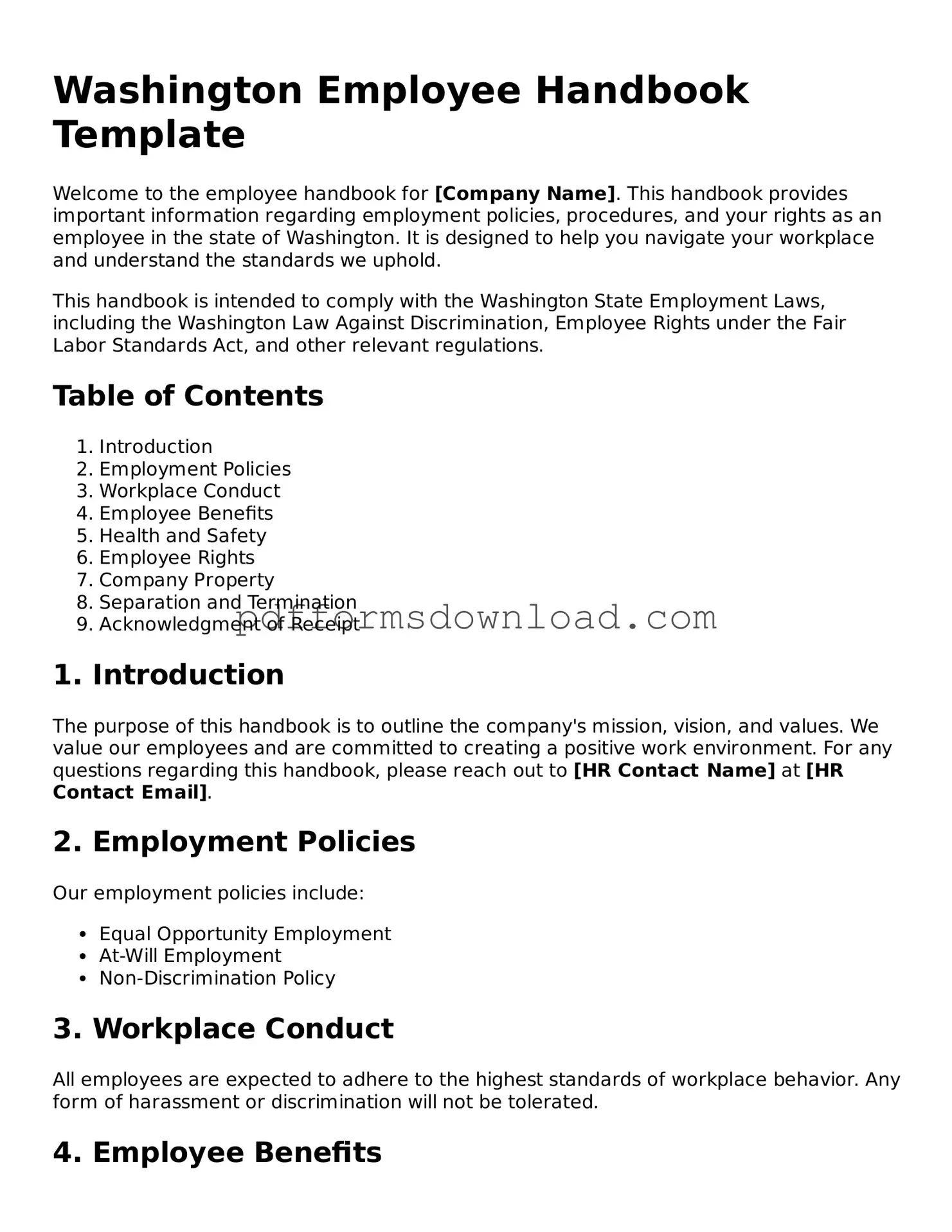What is the Washington Employee Handbook form?
The Washington Employee Handbook form is a document that outlines the policies, procedures, and expectations for employees within a workplace in Washington State. It serves as a guide to help employees understand their rights and responsibilities, as well as the company's rules and regulations. This handbook is crucial for promoting a positive work environment and ensuring compliance with state laws.
Why is it important to have an Employee Handbook?
An Employee Handbook is essential for several reasons. It sets clear expectations for behavior and performance, which can help prevent misunderstandings and disputes. Furthermore, it provides employees with important information about their benefits, workplace policies, and the procedures for reporting issues. Having a well-structured handbook can also protect the employer by demonstrating that they have communicated their policies effectively.
Who should receive a copy of the Employee Handbook?
All employees should receive a copy of the Employee Handbook. This includes full-time, part-time, and temporary employees. It is important for everyone to have access to the handbook so they can familiarize themselves with the company's policies and procedures. Employers may also want to consider providing a copy to new hires during orientation to ensure they start with a clear understanding of the workplace expectations.
How often should the Employee Handbook be updated?
The Employee Handbook should be reviewed and updated regularly, ideally at least once a year. Changes in laws, company policies, or workplace practices may necessitate updates. Regular reviews help ensure that the handbook remains relevant and compliant with current regulations. Additionally, if significant changes occur in the workplace, such as a merger or new management, an immediate review may be necessary.
What should be included in the Employee Handbook?
An effective Employee Handbook should include several key components. These typically encompass an introduction to the company, an overview of employee rights, workplace policies (such as attendance, dress code, and conduct), benefits information, and procedures for reporting grievances. Additionally, it may outline disciplinary procedures and the process for handling disputes. Each section should be clear and easy to understand.
Can an Employee Handbook be legally binding?
While an Employee Handbook is not a contract in itself, it can have legal implications. If the handbook contains promises or guarantees regarding employment terms, it may be considered binding in a court of law. Therefore, it is essential for employers to carefully word their policies and include disclaimers stating that the handbook is not a contract. This helps protect the organization from potential legal issues.
What should an employee do if they have questions about the handbook?
If an employee has questions about the Employee Handbook, they should first review the document thoroughly. Many common questions can be answered by referring to specific sections. If uncertainties remain, employees are encouraged to reach out to their supervisor or the Human Resources department for clarification. Open communication is vital for ensuring that everyone understands the policies and procedures in place.
Is it necessary to have employees sign an acknowledgment of the handbook?
Yes, it is highly recommended to have employees sign an acknowledgment form indicating that they have received, read, and understood the Employee Handbook. This acknowledgment serves as a record that the employee is aware of the company's policies and can help protect the employer in case of disputes. It also reinforces the importance of the handbook as a resource for employees.
